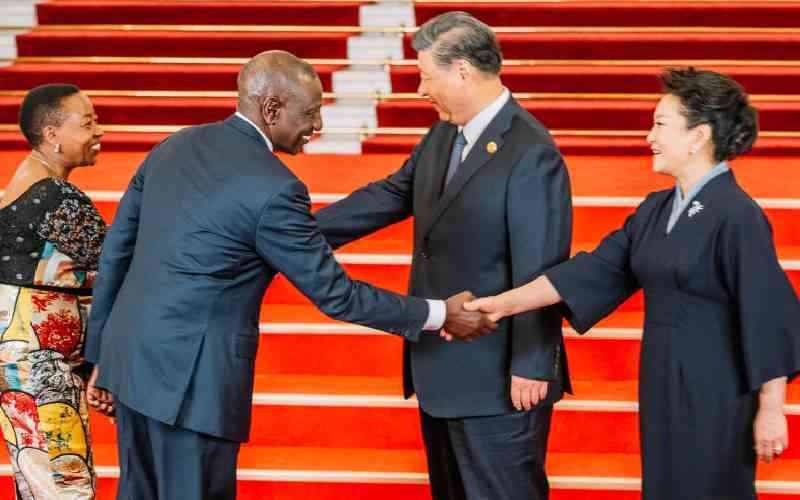Kenya’s economy is set to earn close to Sh400 billion from its trade with China by 2030 representing cumulative gains that the country stands benefit from the Asian giant slowing economy and rebalancing.
Data from the latest edition of the World Bank’s Africa Pulse report indicates that Kenya stands to benefit the most among the sub-Saharan Africa’s countries as the Asian superpower economy move away from an industry and investment-led growth model to one more driven by the services sector and consumer spending.
“China’s rebalancing to lift Sub-Saharan Africa’s GDP by 6.1 per cent, about Sh23.9 trillion ($232 billion) cumulative gain as of 2030 as China’s demand for imported products grows,” stated the report in part.
“As a result, sub-Saharan Africa’s exports to China are expected to increase by 13.21 per cent ($30.6 billion) by 2030.”
Kenya is set to benefit the most with a 7.5 per cent additional gain in GDP by 2030. Other countries that are set to also gain include Botswana and Nigeria which will register a 5.8 and 5.5 per cent in GDP respectively.
“China will be moving towards a domestic consumption model which means that countries like Kenya that export goods and services to China will benefit,” explained Mr Apurva Sanghi, World Bank’s lead economist and programme leader for Kenya.
Data from the Kenya National Bureau of Statistics (KNBS) indicates that Kenya’s exports to mainland China have grown by more than 100 per cent from Sh2 billion in 2008 to Sh4.1 billion recorded in 2013.
The country’s exports into Kenya have similarly ballooned under the same period with China’s exports to Kenya growing by 145 per cent, from Sh74 billion in 2008 to Sh182 billion in 2013.
“China is trying to increase domestic consumption and this means demand for imports is going to be high, which is good for any country that exports to China, especially given the country’s large population,” explained Ms Jane Kiringi, World Bank’s senior economist. “This does not mean that Kenya has the most number of exports to China but that trade has been more in favour of China in the past and now Kenya gets a little more margin to increase her exports because demand in China is set to increase.”
The World Bank, however, warns that low commodity prices and infrastructure constraints are set to drag growth in Sub-Saharan Africa with the region decelerating to 3.7 per cent in 2015, the lowest figures since 2009. This is from the 4.7 per cent growth recorded last year. The slump in the country’s tourism sector continues to take its toll on Kenya’s growth, although economists are optimistic about the future.
“The statistics agency indicated improvement in tourism sector coupled with the recent Obama visit, the Pope’s scheduled visit next month and the WTO ministerial meeting later in the year, the outlook is very positive,” reckons Sanghi.
 The Standard Group Plc is a
multi-media organization with investments in media platforms spanning newspaper
print operations, television, radio broadcasting, digital and online services. The
Standard Group is recognized as a leading multi-media house in Kenya with a key
influence in matters of national and international interest.
The Standard Group Plc is a
multi-media organization with investments in media platforms spanning newspaper
print operations, television, radio broadcasting, digital and online services. The
Standard Group is recognized as a leading multi-media house in Kenya with a key
influence in matters of national and international interest.
 The Standard Group Plc is a
multi-media organization with investments in media platforms spanning newspaper
print operations, television, radio broadcasting, digital and online services. The
Standard Group is recognized as a leading multi-media house in Kenya with a key
influence in matters of national and international interest.
The Standard Group Plc is a
multi-media organization with investments in media platforms spanning newspaper
print operations, television, radio broadcasting, digital and online services. The
Standard Group is recognized as a leading multi-media house in Kenya with a key
influence in matters of national and international interest.








